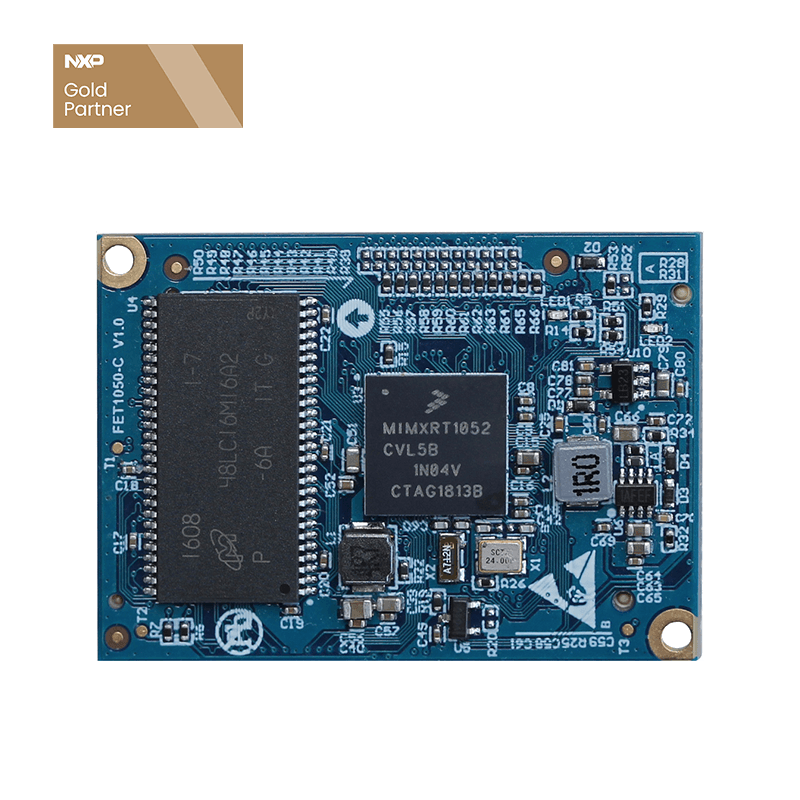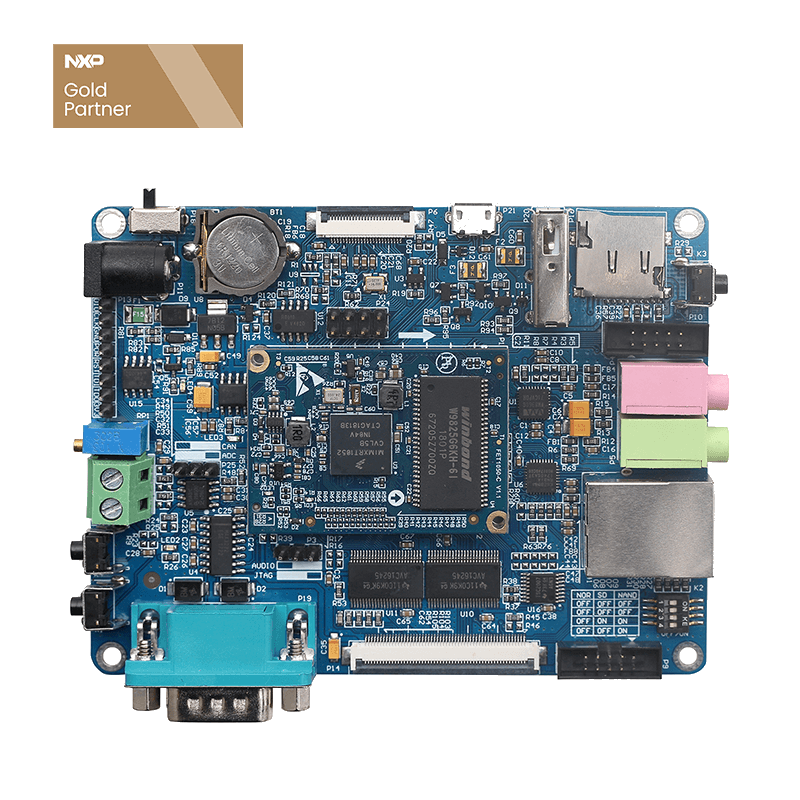
Why Choose i.MXRT1052 for Development Design?
Have you ever had similar problems:
1, Both real-time system, but also the application of processor-level performance and integration.
2, Must be for the application processor design to reduce the overall material cost while maintaining the same level of performance.
3, Need more features than MCU (higher performance, more display, more connectivity options), but can not increase cost or complexity.
4. Lack of experienced staff and/or budget resources makes it difficult to support Linux-based application processor design.
Have you ever encountered such a problem in your product design? Hesitating in the MCU or MPU.
Fusion between high-end MCU and low-end application processor
Forlinx Embedded launched the cross-border FET1052-C core board based on the Cortex-M7 i.MXRT1052 processor, which not only integrates the high real-time performance of MCU, the characteristics of simple design and rapid mass production, but also supports MPU operating system, Abundant functional peripherals and the advantages of diversified network access interface methods.
i.MXRT1052-The performance monster in the MCU industry
Forlinx FET1052-C core board, operating temperature -40~+85, main frequency 528MHz, Coremark running score 3020, 1284 DMIS; 512KB tightly coupled memory, interrupt latency as low as 20ns; when the CPU is running at full load, the core board power consumption is only 0.5W.
CPU function pins are all fan-out
The core board leads out all the processor function pins and can be configured with 124 GPIOs to support product design including advanced multimedia to realize GUI and enhanced human-machine interface (HMI) experience. Its features include advanced 2D graphics acceleration engine, LCD display controller, camera interface, and audio interface that provides high-performance, multi-channel audio streaming.
Powerful multimedia performance
24-bit LCD interface, maximum support 1366*768 resolution, support 2D graphics acceleration and emWin graphics library, support parallel camera interface and 3-channel IIS audio interface.
Provide multiple data communication interfaces and multiple configuration modes to simplify development difficulties.
10/100M adaptive Ethernet, support lwip protocol package; support 8 UART, up to 5Mbps; support 2 CAN, 2.0B protocol; support 20 ADC, 12-bit precision; support 32 PWM, complementary output, orthogonal decoding , Motor fault detection; support 2 USB, USB2.0 Host, USB2.0 OTG.
It is both a single-chip microcomputer and a Linux development platform
In addition to the RT1052 MCU bare metal operation, the core board also supports uCLinux system, providing a complete uCLinux programming image, development environment and test routines. The carefully selected tool chain, you don’t need to change the original usage habits. The MCU development tools support Keil, and also support NXP’s FreeRTOS, SDK, ARM® mbed, and the global ARM ecosystem that provides software libraries, online tools and corresponding support. Realize rapid prototyping and development. MPU development tools still use Ubuntu+GCC, which engineers are very familiar with.
According to the performance of i.MXRT1052 core board products is recommended in the following application areas
1. Robot control
The i.MXRT1052 core board is suitable for use in this scenario based on the following features:
Real-time: Meet the high real-time needs of robots;
Rich expansion bus: Support for motor control, support for I2C, SPI, USB and other scalable buses, easy to expand sensors, actuators, communication modules and so on;
Both network communication functions: convenient remote upgrade, monitoring.
2. Industrial, medical field equipment control
The i.MXRT1052 core board is suitable for use in this scenario based on the following features:
Industrial temperature: Adapt to complex temperature sites;
High real-time: Suitable for scenarios where real-time is more demanding;
Supports simple display: can be used to display simple status parameters, etc.
Bus, interface rich: easy to communicate with industrial and medical equipment, as well as module expansion.
3. Internet of Things (IOT) terminals
The i.MXRT1052 core board is suitable for use in this scenario based on the following features:
Industrial grade: Suitable for harsher environments such as temperature.
Low power consumption: Suitable for power-sensitive environments such as field laying, e.g. solar cell power.
Small size: The core plate is small and easy to integrate.
Extensible bus rich: support I2C, SPI, USB and other scalable bus, easy to expand sensors, actuators, communication modules and so on.
Computing power: Supports edge calculations with "complex algorithms but small amounts of source data"
4. Low-power handheld devices
The i.MXRT1052 core board is suitable for use in this scenario based on the following features:
Low cost: Suitable for large and cost-sensitive equipment.
Low power consumption: Suitable for handheld devices (generally battery powered).
Strong computing power: more complex local algorithms can be done.
Simple display: Support requirements are not too high for display.
Simple control: Supports simple local control of handheld devices (e.g. keystrokes, etc.)
Simple communication: can meet the small amount of data communication requirements (wired, wifi, 2/3/4G, etc.)



